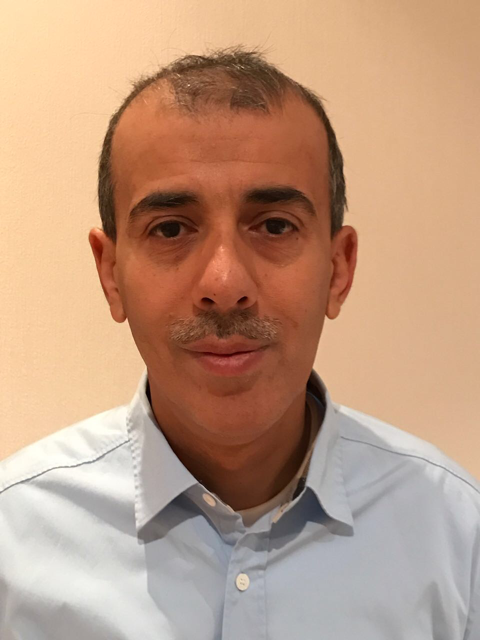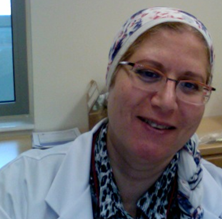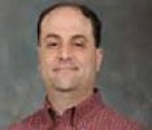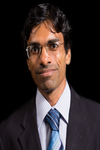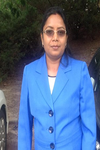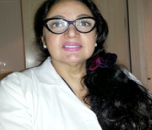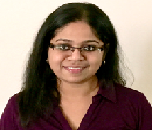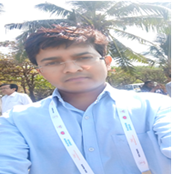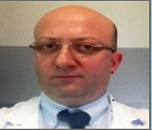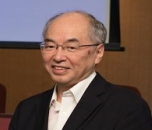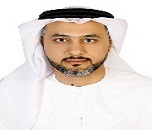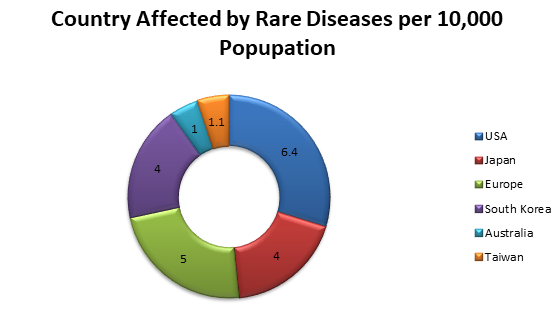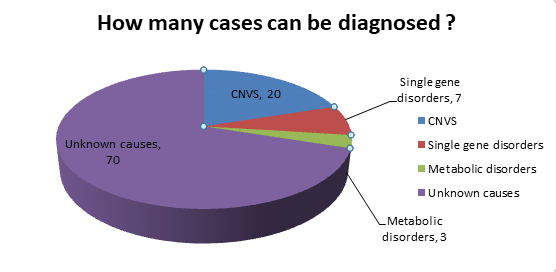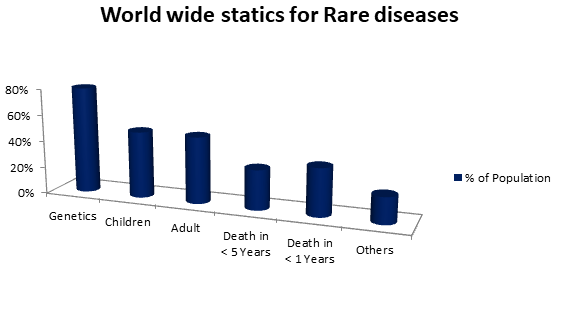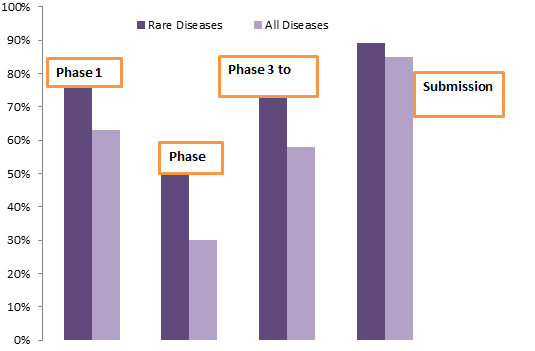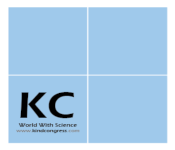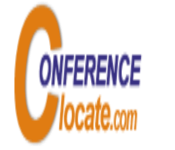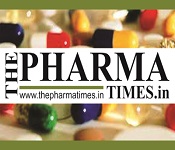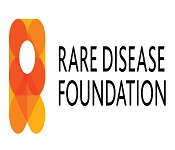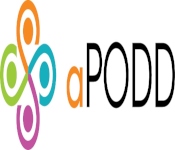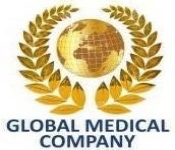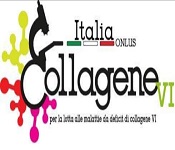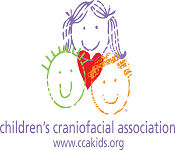Theme: The Future of Drug Development for Rare Diseases
World Rare Diseases 2019
Rare is the Union of Beauty and Purity
World Rare Disease 2019 Scientific Committee will be honored to welcome you to attend the 2nd World Congress on Rare Diseases to be held during November 25-26, 2019 at Dubai, UAE with the theme “Hope: The Best Therapy for Rare Diseases”.
A rare disease, also known as orphan disease, is any disease that affects a small percentage of the population. It can be difficult to receive a diagnosis for a rare disease. Rare diseases are life-threatening or chronically debilitating diseases which, when grouped together, are more common than you may think. Most rare diseases are genetic, and are present throughout a person's life, even if there are no immediate symptoms at an early age. World Rare Diseases 2019 gives the premier interdisciplinary gathering for Microbiologists, Bacteriologists, Virologists, Pharmacists, Neurologist, Cardiologist and Healthcare Experts to present their latest research results, thoughts, developments, emerging innovation and applications in all areas of rare diseases and orphan drugs.
Why to attend?
World Rare Diseases 2019 is giving a worldwide stage to analysts that afford new insights into the concealed rare diseases. This conference will feature a global audience of scientific leaders, academia and health care professionals, and Orphan Drugs experts who are going to discuss today’s emerging treatments and diagnostics. It is designed to provide an educational forum that stimulates clinical, research, government and patient communities to create a coordinated and comprehensive approach for advancing the implementation of research, clinical care, care delivery coordination and other public health interventions critical to improved outcomes in Rare Diseases.
Target Audience
• Rare Disease Associations and Societies
• Patient Group
• Bacteriologists
• Microbiologists
• Virologists
• Pharmacists
• Epidemiologists
• Dermatologists
• Neurologist
• Ophthalmologist
• Cardiologist
• Medical Colleges
• Pharmaceutical Companies and Industries
• Health care professionals
• Students
• Scientists
• Researchers
• Training institutes
• Drug manufacturing companies
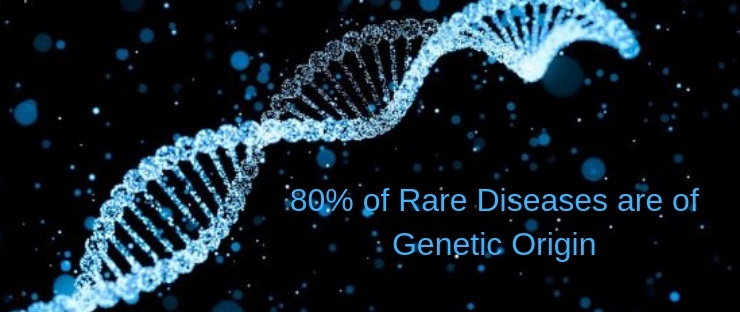
Track 01: Rare Diseases
A Rare disease is any disease that influences a very less number of the population. Rare illnesses include rare cancers such as childhood cancers and a few other well-known conditions, such as cystic fibrosis and Huntington’s disease. The vast majority of rare infections will affect far less than this – a few will affect only a handful, or even a single individual. This is the case of thalassemia, anaemia of genetic origin, which is rare in Northern Europe, but it is frequent in the Mediterranean region. Many rare diseases appear early in life. The exact cause for many rare diseases remains unknown. But Environmental factors, viral infections, genetic mutations, diet, smoking, or exposure to chemicals, also can play a role in rare diseases.
Track 02: Future of Rare Diseases Research
Due to the rarity and differences of rare infections, research needs to be worldwide to guarantee that specialists, researchers and clinicians are connected, that clinical trials are multinational and that patients can benefit from the pooling of resources over borders. It is still a reality for rare disease patients to spend a long time within the health care system before an exact conclusion is made. Research in rare infections is crucial as many patients still need proper diagnosis and left without compelling medications; it is also an region where expertise is also rare. In addition, research in this region is exceptionally significant from the scientific point of view as rare diseases are model diseases for more common disorders and are strong drivers of innovation. Next-generation sequencing and progressed information sharing have resulted in faster discovery of gene disease and thus diagnostics .
Track 03: Challenges of Living with a Rare Diseases
Focusing within the coordination between medical, social and support services in order to handle the challenges that people living with a rare disease and their families around the world confront each day. Even if rare disease patients and their families face many challenges, enormous progress is being made every day. Most rare diseases have no cure, so living with a rare infection is an on-going learning experience for patients and families. Day-by-day, hand-in-hand, together we present a united voice to advocate for the treatments, care, resources and services we all need. Managing these care-related tasks alongside their usual daily activities such as work, school and leisure time can be challenging.
Track 04: Orphan Drug
Drugs that are not developed by the pharmaceutical industry for economic reasons but which respond to public health need. Orphan drugs' are intended to treat diseases so rare that sponsors are reluctant to develop them under regular marketing conditions. The process from the discovery of a new molecule to its marketing is long, expensive and very uncertain. Developing a drug expecting to treat a rare disease does not allow the recovery of the capital invested for its research.
Track 05: Infectious Diseases
Many terms are normally used in describing the infectious diseases. Disease refers to the presence of pathology and an infectious disease is an infection caused by a microorganism. Virulence is a term referring to the power of an organism to produce disease in a particular host. Immunity refers to the degree of resistance of the host for a specific microbe. Many infectious maladies, such as measles and chickenpox, can be anticipated by vaccines. Infectious diseases can cause many distinctive symptoms. Some are so mild that you may not even notice any side effects, while others can be life-threatening. There are medicines for a few infectious diseases, but for others, such as a few viruses, you can only treat your symptoms. You can take steps to prevent many infectious maladies. There are numerous distinctive ways that you can get an infectious disease for example – through insect or animal bites, contaminated food, and water. Pregnant mothers can too pass some germs along to their babies; the infectious diseases are usually characterized by the dominant organ system involved.
Track 06: Rare Genetic Diseases
There are numerous different causes of rare diseases. The larger part is thought to be hereditary, directly caused by changes in genes or chromosomes. In a few cases, genetic changes that cause disease are passed from one generation to the next. In other cases, they occur randomly in a person who is the primary in a family to be diagnosed. These diseases have terrible names. Sometimes they are even nameless. Due to the lack of investment in research, we are still new with the causes or components of most of the rare genetic diseases scientifically known to exist. Chromosome disorders are of two types numerical and structural. In some cases chromosome abnormalities happen during the development of an egg or sperm cell, and other times they happen after conception. Chromosome disorders may be suspected in people who have developmental delays, intellectual disabilities and/or physical abnormalities.
Track 07: Neglected Tropical Diseases
Neglected tropical diseases are a bunch of parasitic and bacterial infections that affect more than including 1 billion people and cost developing economies billions of dollars each year, 836 million children. They are as regularly as possible clustered together topographically and people are habitually afflicted with more than one parasite or contamination. Successful control can be accomplished when chosen open wellbeing approaches are combined and passed on locally. Trade are guided by the local epidemiology and the accessibility of fitting measures to recognize, expect and control maladies. Various dismissed tropical maladies can be expected, disposed of or indeed demolished with made strides get to to existing secure and cost-effective gadgets. Control depends on straightforward mediations that can be carried out by non-specialists too.
Track 08: Rare Pediatrics Diseases
Rare pediatric diseases is a serious or life-threatening disease, affect people aged from birth to 18 years, including age groups often called neonates, infants, children, and adolescents. Achondrogenesis is one of the cases of pediatric rare diseases. Pediatric rare diseases have received increased attention in recent years due to greater public awareness, significantly improved understanding and treatment of the relatively more common disorders, elimination of nutritional deficiencies and the development of laws related to the treatment of rare diseases.
Track 09: Rare Endocrine Genetic Diseases
There are many rare endocrine system diseases. Addison's infection is very uncommon. . According to the National Organizing of Wellbeing, more than 175 distinct rare diseases affect the endocrine system, a complex system of organs and glands that employs around 30 distinctive hormones to influence a range of vital functions including growth, metabolism, heart function, and fertility. Rare endocrine diseases can potentially affect any organ system, however.
Track 10: Rare Haematology Diseases
Rare hematology diseases fall into various subcategories, including anemia-type red blood cell conditions (e.g. sickle cell beta thalassemia, Diamond-Blackfan anemia), white blood cell dysfunctions related with different malignancies ,immuno- platelet-based abnormalities that influence platelet and plasma cell disorder. Some rare blood disorders especially those that are gene-based are simple to distinguish with a basic test, whereas others require significant investigator work to effectively analyze. Due to the expansive number of blood conditions common and exceptional, haematologists tend to be gifted agents since they got to be pros in differential conclusion.
Track 11: Rare Skin Diseases
Most of the diseases influences the skin begin within the layers of the skin, such abnormalities are also important factors in the diagnosis of a variety of internal diseases. The skin has an inherent region-specific anatomical diversity which will profoundly modify the appearance of a rash. This is apparent when skin transplanted from one area of the body to another retains the morphological characteristics of the donor area. The classification of hereditary skin disorders generally has been based upon gross morphological, histological and electron microscopic findings; however, because a skin disease may not always have a characteristic presentation, the specific diagnosis sometimes has been in doubt. For example Aarskog
Track 12: Rare Autoimmune Diseases
Both national and international association have been made in later years to inform and defend patients affected by these disorders. Rare infections occurs due to changes in the immune system represent a field of medical science of great interest that is undergoing continuous expansion; these disorders have an incredible social and economic impact because they often affect young or very young people at the height of their social activities and relationships. Achondroplasia is a disorder of bone growth that prevents the changing of cartilage to bone. It is characterized by dwarfism, limited range of motion at the elbows, and normal intelligence. Most cases of achondroplasia are not inherited. Approximately 80% of people who have achondroplasia have parents with normal stature and are born with the condition as a result of a new gene alteration. Each person with Achondroplasia has a 50% chance, with each pregnancy, to pass on the changed quality.
Track 13: Clinical Research and Treatment
Rare diseases give the opportunities to study human physiology and biomedical science from interesting perspectives. Major scientific breakthroughs resulting from study of rare diseases. Researchers are increasingly working through networks in order to share the results of their research and to advance more effectively. The satisfaction of diagnosing a patient with a rare disorder successfully is often rapidly countered by the realization that the capacity to understand and treat the patient’s condition is limited by ignorance and the difficulties of studying the disease. An orphan drug is a medicinal product developed for the treatment of rare diseases. For all rare diseases, science can provide some answers.
Track 14: Mystery Diagnosis of Rare Diseases
Rare diseases affect an estimated 2-4% of the population. A likely next step is whole genome sequencing, a diagnostic technique that over the last decade has significantly bolstered the effort to identify undiscovered diseases. A different approach is to search for patients with similar hereditary abnormalities and similar side effects. Determining the cause of a malady is often a victory in its own right for people who’ve spent years trying to figure out what’s wrong with their bodies.
Importance & Scope:
There are more than 7,000 classified rare diseases and 70% of them have no type of treatment, there are extensive neglected needs around there. Administrative advantages, for example, longer market selectiveness, leap forward assignments, diminished expenses and assessment motivators are all reassuring speculation.
World Rare Diseases 2019 will be the best platform for all the specialists and super specialists, renowned Scientists, research scholars, students who are working in this field across the globe under a single place to exchange their knowledge on rare diseases. This event is an effort to find an alternative for invasive imaging technique against diseases like haemophilia, cystic fibrosis, lupus, motor neurone disease, acromegaly, Fragile X syndrome, Gaucher’s disease and Gorlin’s syndrome, as well as many others. These diseases often referred to as orphan diseases. Affect only a small portion of the population .The number of diseases for which no treatment is currently available is estimated to be between 4,000 to 5,000 worldwide. Orphan drugs are medicinal products which are used for the treatment of diseases or conditions which affect a very small portion of the population which are known to be rare diseases like infectious diseases, Genetic Diseases and Etc.
Impact of Rare Diseases
Rarity is an attribute which finds contextual appreciation or criticism. A rare gem could be an object of utmost desire, but a rare genetic mutation which translates into the rare, incurable disease is not. A disease which shows particularly low prevalence as it affects a small number of individuals in a population classifies as a rare or orphan disease. Such diseases are yet to be captured in a single universal definition, as defining these diseases is a complex issue. It is because these diseases show symptomatic heterogeneity, influenced by the socioeconomic and demographic condition of the patient as well. Most of the definitions are therefore based on prevalence estimates, undermining the factors of geographic location, level of rarity.
Diagnosed Ratio in Rare Diseases
Among the couple of rare diseases studied it is found that 18%had ordinary lifespan 44%possibly deadly during childbirth or before 5 years old -44% adult , depending on the seriousness, penetrance or type (child, juvenile or adult types) of the disease and 78% due to genetic disorder.
Success probabilities for Rare Diseases vs. All Diseases
Most of the rare diseases are already recognized and their diagnosis is also there, while technological progresses made it simpler to identify rare diseases and develop the complex biological molecules often required to treat them. Now a day’s rare disease are not so rare.
Rare Diseases Associations :
- ICD coding for rare diseases
- ICOSEP International Coalition of Organizations Supporting Endocrine Patients
- Rare Disease International
- European Organisation for Rare Diseases
- The Aarskog Foundation
- National Organization for Rare Disorders
- Genetic Alliance
- Global Genes Project
- Canadian Organization for Rare Disorders
- Rare Diseases Ireland
- Rare Voices Australia
- Debra International
- National Gaucher Organization
- Rare Diseases Denmark
- Alliance Maladies Rares
- Rare Diseases Hungary
- Cystic Fibrosis Ireland
- Malaysian Rare Disorders Society
- Rare Diseases UK
- The Fragile X Society
- Organization For Rare Diseases India
Conference Highlights
- Rare Diseases
- Future of Rare Diseases Research
- Challenges of Living with a Rare Diseases
- Orphan Drug
- Infectious Diseases
- Rare Genetic Diseases
- Neglected Tropical Diseases
- Rare Pediatrics Diseases
- Rare Endocrine Genetic Diseases
- Rare Haematology Diseases
- Rare Skin Diseases
- Rare Autoimmune Diseases
- Clinical Research and Treatment
- Mystery Diagnosis of Rare Diseases
To share your views and research, please click here to register for the Conference.
To Collaborate Scientific Professionals around the World
| Conference Date | November 25-26, 2019 | ||
| Sponsors & Exhibitors |
|
||
| Speaker Opportunity Closed | |||
| Poster Opportunity Closed | Click Here to View | ||
Useful Links
Special Issues
All accepted abstracts will be published in respective Our International Journals.
- Journal of Molecular and Genetic Medicine
- Journal of Genetic Syndromes & Gene Therapy
- Journal of Rare Disorders: Diagnosis & Therapy
Abstracts will be provided with Digital Object Identifier by


